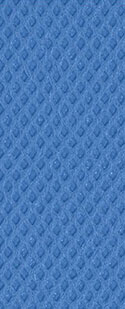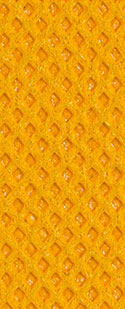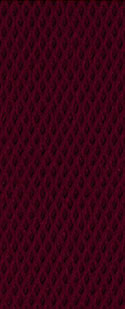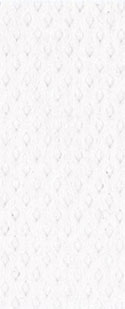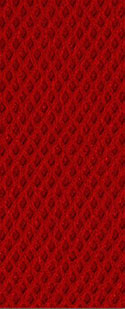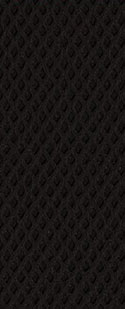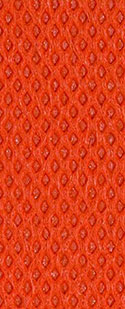
Spunbond (SSS/SS)
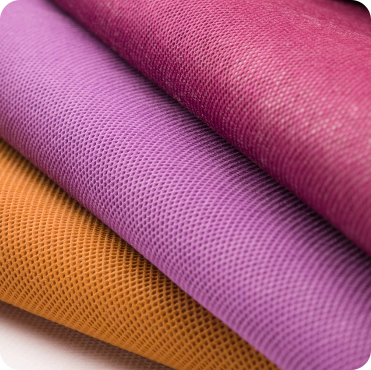
Spunbond (SSS/SS)
share
Spunbond (sss/ss)
Non-woven textiles are made from polypropylene and consist of extended filaments produced through a special and exclusive process. This product possesses several unique properties, including high strength, uniformity, and an economical price.
Purchase from Harir Baft Amir
Specifications
- Grammage 10-200
- Use case in various colors according to customer’s order
- Excellent mechanical features
- Hydrophilic/Super hydrophilic
- Hydrophobic
- Super Soft
- Nano Anti-bacterial
- Anti-UV
- Anti-allergic
- Maximum width of fabric 320
Product color qualities
Expenses Spunbond (SSS/SS)
- Medical
- Hygienic and cellulosic
- Industrial
- Agriculture
- Filtration
- Food industry
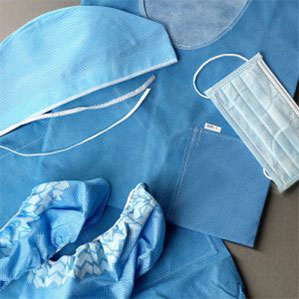
Nonwoven Spunbond is a type of fabric made from different polymers, particularly polyester and polypropylene, and comes in various models. It is known as disposable fabric and is distinct from yarn-based textiles. Non-woven fabrics are produced by connecting threads through chemical, mechanical, and thermal processes (press and needlework). Due to their unique and special features, these fabrics find applications in various industries.
One significant use of spun-bond and melt-blown fabric is in the medical, therapeutic, and hospital settings. For instance, they are used in disposable clothing for patients and surgeons in the operating room. Additionally, the demand for non-woven fabrics has increased with the onset of the COVID-19 pandemic, leading to their use in mask production, which has played a crucial role in preventing and recovering from the disease.
Other products manufactured from nonwoven fabrics include bedsheets, patient's clothes, gowns and surgical sets, caps, shoe covers, masks for patients, bags, handbags, hygienic and cosmetic napkins, sanitary napkins, and medical equipment covers.
Advantages of using spunbond:
Cost-saving and affordable prices for hospitals and medical centers
Anti-bacterial properties and compliance with health standards
The ability to recycle spunbond fabrics quickly without causing harm to the environment
Non-allergenic and gentle on the skin due to delicate and soft texture
Fibers resistant to impact and stretching
Protection against sun radiation, preventing burns and skin diseases
Spunbond properties in medical applications:
The standard grammage for using nonwoven fabric in medical applications includes 35 to 40 grams for patients' clothes and surgical sets, 25 grams for bedsheets and floorings, and 18 grams for caps and shoe covers. Hospitals and medical centers often use sky blue and green for clothes, while pink is commonly used in the women's department.
Further study: The combination of melt-blown and spunbond in composites.
Summary of using spunbond in medical applications:
Nonwoven fabrics, known as spunbond in the market, offer exclusive features. Their use in medical applications has gained attention from medical and therapeutic centers due to their affordability, softness, antibacterial properties, and high resistance. Clothes and bed sheets made from nonwoven fabric in the medical field ensure adherence to health standards, comfort, and reduced sensitivity.
Applications in the medical field include:
Surgical and operating room clothing (gown and drapes)
Disposable masks and caps
Patient's clothes, bed sheets, mats
Medical equipment covers
Covers used in medicine and forensic medicine
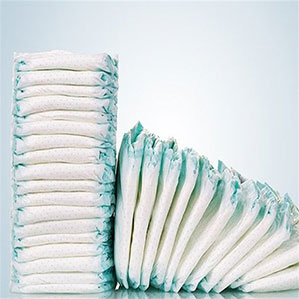
"Spunbond is a type of non-woven fabric that lacks warp and weft and belongs to the category of industrial textiles. With the increase in population, the availability of natural fibers is not sufficient to meet the needs of the community. Consequently, this demand has been addressed through the production of non-woven fabrics, which also serve as suitable and versatile substitutes for natural textiles.
Non-woven fabrics are made from a material called polypropylene and are known as needle-punched or spunlaced fabrics due to their form and structure. These fabrics are manufactured through chemical, mechanical, and thermal processes and come in various colors and weights ranging from 8 grams to 380 grams.
Spunbond can be used in any condition, whether dry or moist. Additionally, it boasts high strength and resistance to wear and tear, making it quite challenging to tear apart. This is due to its water-repellent nature, which has made it popular and favored among customers.
With increasing attention to public health and individual health awareness, there has been a rise in the use of non-woven and single-use products in hygiene and cellulose applications. Consumers prefer these products for their convenience, affordability, and non-allergenic properties.
Furthermore, in recent years, due to the prevalence of the coronavirus disease, the use of hygiene products such as tissues, disposable masks, gloves, and shoe covers has increased. Many of these hygiene products are made from spunbond fabric, and as a result, this type of textile has significantly contributed to the prevention and control of viral diseases.
Hygiene products are also made from cellulosic materials, which are natural fibers combined with non-woven fabrics. This combination enhances the fabric's impermeability, non-porosity, and tensile strength, making it highly versatile in the production of hygiene and cellulose items.
Applications of spunbond in hygiene and cellulose usage include:
Cleaning products: Baby wipes, moist wipes, and cosmetic wipes
Hygiene products: Baby diapers, adult diapers, and sanitary pads
Disposable masks and bed sheets
Specifications of spunbond in hygiene and cellulose applications:
• Antibacterial capability
• Impermeability to water and moisture
• Prevention of infection and skin sensitivities
• High strength and durability against wear and stretching
• Recyclable and environmentally friendly
• Cost-effective
• Soft and gentle texture
• Lightweight and comfortable
The use of spunbond in various hygiene and cellulose applications is continuously expanding, especially in the field of health and well-being. Thanks to its antibacterial properties and high impermeability, these fabrics effectively prevent infectious diseases, skin sensitivities, and allergies, making them indispensable in hygiene applications."
Application of Spunbond in Industrial Uses
Spunbond fabrics, thanks to their unique properties, have gained a significant share in the textile market and are used in various fields to meet the needs of individuals. These fabrics find applications in the medical, agricultural, hygiene, industrial, and household sectors.
The history of these fabrics dates back to 1940 when their production began in an American company for making fiberglass. Eventually, the process of producing non-woven textiles evolved, leading to the creation of non-woven fabrics without warp and weft. These types of fibers are made from different polymer combinations.
In this type of fabric, there are no warp and weft threads, and they are produced through chemical and physical processes such as pressing, heating, and needle-punching. They are introduced as non-woven, needle-punched, disposable, and non-stitched fabrics.
Non-woven fabrics can be produced with various characteristics, depending on their specific use and application. The diversity of non-woven fabrics includes variations in weight, fabric thickness, color, length, and width. Additionally, they possess qualitative features like softness, comfort, antibacterial properties, UV resistance, water repellency, or water resistance.
The numerous advantages of spunbond fabrics have led to their widespread use in society, becoming a replacement for traditional textiles. Some of these benefits include cost-effectiveness compared to other fabrics and their quick recyclability, which poses no threat to the environment.
Due to their extensive use in various applications, non-woven fabrics exhibit high resistance and tensile strength, making them resilient against impacts and stretching

Spunbond in Industrial Uses
Automotive Industry:
• Interior decorations
• sound insulation
• Seat covers
• Car canopies
• Paint lines.
• Construction and Road Industry:
• Prefabricated and false walls,
• Dam construction,
• Formwork,
• Soil stabilization
• Road construction,
• Semi-constructed building covers,
• Piping as sleeves,
• Decoration, and wallpapers,
• Building facades,
• Thermal and sound insulation.
• Filtration Industry:
• Electric vacuum cleaner bags,
• Precise filters and industrial filters,
• Liquid filtration, air, water, and liquid filters.
• Packaging Industry:
• Covering household items, furniture,
• packaging food items like beans, rice, tea, etc.,
• packaging bags for shoes, clothes, computer covers, and accessories,
• Covers for suits and trousers.
In conclusion, the growing industries in various sectors have increased the demand for textiles, and the substitution of non-woven fabrics (synthetic fibers) in place of natural textiles has greatly contributed to this industry. Additionally, with limited natural resources and the need to preserve the environment, it is essential to take advantage of Spunbond products and their numerous benefits.
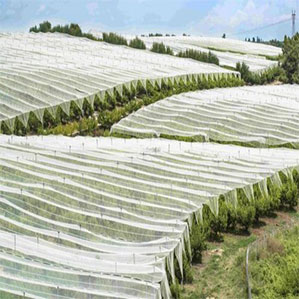
"Spunbond, one of the most common non-woven fabrics, does not have warp and weft threads and is an industrial fabric produced through a specific industrial process using a material called polypropylene. This non-woven fabric has various applications, with one of its major uses being in agriculture and horticulture, and its utilization is increasing.
The recent crisis of water scarcity, depletion of groundwater, and decreased rainfall have resulted in numerous challenges in agriculture and horticulture, including reduced yield and quality of agricultural products.
According to the statistics center, 92% of water resources in Iran are used in agriculture, making optimal water use and preventing its wastage essential. To achieve this goal, the application of innovative methods in agriculture is crucial, and one of these methods is the use of spunbond in agriculture and horticulture.
This type of non-woven fabric has unique properties, benefits, and efficiency, making it a suitable alternative in agriculture, especially as a replacement for plastic covers. Unlike plastic, which is neither UV resistant nor air-permeable, non-woven textiles address these shortcomings and have become one of the most popular and useful products in agriculture.
Spunbond's Properties in Agriculture and Horticulture:
- High breathability
- UV resistance
- Economical
- Cold and frost resistance
- Prevention of water and moisture wastage
- Protection against pests and rodents
- Combating pests and weeds
- Temperature regulation by spunbond
- Increased crop yield
- High flexibility
- Environmentally friendly
- Available in various weights and dimensions
- Protection against hailstorms, storms, and heavy rains
- Water repellency and water resistance
Applications of Spunbond in Agriculture and Horticulture:
- Use in furrows
- Insulating cover to prevent frost
- Float covers
- Crop protection and irrigation
- Greenhouse and warming covers
- Nursery covers for protection against cold and heavy rain
- UV protective shield
- Pot and fruit sapling covers
- Plant shading covers
Spunbond's application in agriculture and horticulture plays a vital role in optimizing and increasing agricultural productivity, particularly due to its UV resistance, high tensile strength, water repellency or water resistance, and prevention of water wastage and damage to plants. Additionally, this agricultural fabric allows for use in any season and climate."

Spunbond is a type of non-woven fabric made from continuous and uniform polymer fibers that are mechanically, chemically, and thermally bonded together. The production of this fabric started in 1960, and its usage is increasing and expanding due to its abundant capabilities and unique efficiencies in the field of non-woven fabrics.
This type of non-woven fabric finds applications in various industries such as hygiene and medical products, agriculture, industry, construction, packaging, and filtration.
The modernization of societies, urbanization, the establishment of factories around cities, and the increasing use of vehicles consuming fossil fuels have led to various environmental issues, including water and air pollution. To combat these pollutants, filtration and purification systems are essential.
Filtration is the process of separating materials based on their different physical and chemical qualities and also separating insoluble solids from liquids. In the past, natural filters such as paper, sand, glass, and cloth were used, but nowadays, spunbond has replaced them, and this type of non-woven fabric is used in water and air purification devices and industrial filtration.
In recent years, due to the COVID-19 pandemic, the use of filter masks has played a crucial and effective role in preventing the spread of the virus. In the filtration industry, filter masks made of spunbond are among the most important non-woven fabric products due to their impermeability, antibacterial properties, and soft fibers.
Applications of Spunbond in Filtration:
- Surgical masks
- Cleanroom filters (cartridges)
- Water purifiers
- Air ventilation filters
- Industrial filters
- Air and oil filters in vehicles
- Filters for toxic gases
- Water filters
- Dust particle separators
Characteristics and Advantages of Using Spunbond in Filtration:
- Prevents various pollutants such as bacteria, minerals, viruses, and metals
- High flexibility and stability
- Resistant to tension and tearing
- Durable and highly efficient
- Chemical resistance
- Physical stability
- Air permeability
- Fire and heat resistance
- High resistance to fats and oils
- Cost-effectiveness
- Environmentally recyclable
- Resistant to wear and corrosion
The use of spunbond in filtration not only improves the quality of products by removing pollutants but also plays a crucial role in addressing air pollution in large cities and water pollution caused by industrialization. Filtration devices for water purification and air conditioning provide people with clean water to drink and fresh air to breathe. Additionally, the use of filters in vehicles and industries not only enhances their efficiency and performance but also prevents air pollution and contamination.

Spunbond is one of the major types of non-woven fabrics, which is devoid of weaving and lacks warp and weft threads. Non-woven fabrics, due to their unique characteristics, have acquired a significant share of the textile market.
The primary material for producing this type of fabric is filament, which passes through a cold air channel and, in an aerodynamic form, is stretched and finally forms the spunbond layer on the conveyor belt.
Non-woven fabrics are widely used in various applications such as medical, hygiene, cosmetics, agriculture, construction, filtration, and more. One of its significant applications is in the packaging of food items.
Food packaging should protect the materials against chemical, microbial, biochemical changes, and spoilage, as well as against damages during transportation and storage, which, therefore, makes spunbond a prevalent and modern choice in this field.
The use of non-woven fabrics in food packaging is increasing, leading to reduced consumption of natural and raw fibers and contributing to resource conservation and environmental preservation.
Advantages of Using Spunbond in Food Packaging:
- Enhanced shelf life: It captures moisture in food items such as meat and prevents spoilage.
- High resistance: It withstands tension and impacts, making it suitable for packaging dry foods like nuts or legumes.
- Moisture resistance: It is resistant to water, making it suitable for use in food items like tea, coffee, and flour.
- Recyclable: Environmentally friendly
- Increased diversity in spunbond: Various options in material, color, shape, and usage
- Light protection: Prevents food items sensitive to sunlight from spoiling.
- Antibacterial
- Cost-effective and economical
Regarding the application of spunbond in food packaging, with the industrialization of societies, people's usage of frozen or processed foods has increased. Therefore, the efficiency and quality of food packaging have become vital and necessary. Spunbond fabrics, with their resistance and special properties, are an effective and suitable alternative in food packaging.
The benefits of using spunbond in food packaging are numerous, including prolonging the shelf life of food items, reducing waste, and preventing spoilage. Additionally, due to population growth and the need for more food and successful business and marketing strategies, the improvement of non-woven fabrics in this field is essential and fundamental.
Start a conversation
Hello ! Click on a member below and chat.



